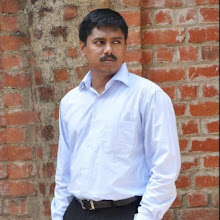The system tray is a specialized area, typically at the bottom of the desktop, where users can access continually running programs. On Microsoft Windows, the system tray is often referred to as the Taskbar Status Area, while on the Gnome Desktop (linux), it is typically referred to as the Notification Area.
On KDE, it is referred to as the System Tray. On each system, this tray area is shared by all applications running on the desktop.
Figure above shows the system tray on Windows(xp). The system tray resides by default in the lower right corner of the screen.
How To Use Disk CleanUp And How To Disable Disk CleanUp In Windows
Optimize Display Settings In Windows XP
Remove Spyware and Malware From PC Update Windows Manually | Skip Automatic Updates
Automatically Delete Temporary Files In Windows Vista
Relevant Links:
Disable Extra Startup Programs In WindowsHow To Use Disk CleanUp And How To Disable Disk CleanUp In Windows
Optimize Display Settings In Windows XP
Remove Spyware and Malware From PC Update Windows Manually | Skip Automatic Updates
Automatically Delete Temporary Files In Windows Vista
After using your computer for some time, you may find that there are a lot of icons building up in your system tray. With Windows Vista, you can hide these icons to remove clutter.
Figure above shows the Start Menu Properties -- Notification Area on Windows (vista).
- Right click the space next to the clock and select properties.
- In Taskbar and Start Menu Properties, select the Notification Area tab and then select customize.
- Now select the icons you want to hide and choose hide.
- Press OK on both windows you just opened and you are done.
The above method will only hide the icons from the tray. But it is essential to remove un used programs from the computer for ever. Know when you have to remove those softwares completely!
Cleanup Old Software and Files
Cleaning up junk software from your computer can decrease security risks and increase your machine's performance. Limiting the software that is installed on your computer can reduce the points of attack that a hacker can use to get at your machine, as well as minimize the loss of sensitive data should your machine become compromised.
Why To Remove Un-Used Software's?Hackers look for old, out of date programs to use as openings to get at the rest of your machine. If those openings don't exist, it will make it much harder for your computer to become compromised. Also read how to Hack Windows Vista Administrator Password.
Many programs can run in the background without your immediate knowledge, removing those programs can lead to improved speed and performance. Also know When You Should Upgrade Your Software.
It is useful once a year to go through and remove (uninstall) programs that you no longer use, downloads that are simply sitting on your machine taking up space and files with sensitive data that you no longer need. Also Read - Remove Installed Software Using Brute-Force Method.
Relevant Links:
Delete In-Use Files In Windows VistaDisable Extra Startup Programs In Windows
How To Use Disk CleanUp And How To Disable Disk CleanUp In Windows
Optimize Display Settings In Windows XP
Remove Installed Software Using Brute-Force Method
Remove Spyware and Malware From PC
Start Windows In Less Time | Load Windows Faster
User Account Control In Windows Vista
Vista Service Pack 2 Preview | Vista’s Second Coming
When You Should Upgrade Your Software Update Windows Manually | Skip Automatic Updates
Automatically Delete Temporary Files In Windows Vista

2 comments
Write commentsalso hold down the windows logo key then press r, then type in the run box "msconfig" without quotes. press enter, go to the startup tab, and disable startup items. if you need software but dont want it to load in the system tray automatically, that is where you disable it. you can still open it later.
ReplyThank you "Anonymous" for sharing your ideas in our blog!
Reply